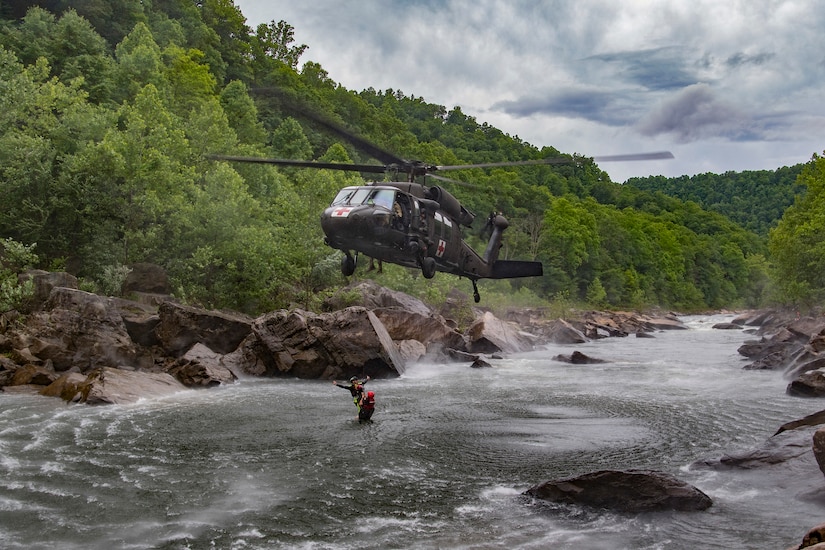By Army Sgt. Zoe Morris, West Virginia National Guard
KINGWOOD, W.Va. -- Soldiers from the West Virginia Army
National Guard and the West Virginia Swift Water Rescue Team attained the
necessary training and certification June 10-13 to identify as a Federal
Emergency Management Agency Type 1 swift water/flood search and rescue team
within the National Incident Management System, the comprehensive, national
approach to disaster response.
On the Cheat River in Preston County, West Virginia, three
soldiers from the Swift Water Rescue Team and 18 soldiers from Company C, 2nd
Battalion, 104th General Support Aviation Battalion trained on the helicopter
underwater egress trainer and a helicopter search and rescue course that
encompassed helicopter hoist, tracking victims dow river with a helicopter and
deploying a rescuer from the helicopter. The team included pilots, crew chiefs
and rescue swimmers.
In addition to the training on the Cheat River, three Swift
Water Rescue Team soldiers assisted Spec Rescue, a national search and rescue
training organization, in training FEMA urban search and rescue teams from
around the country on the New River outside of Fayetteville, West Virginia,
June 20 and 21. The training consisted of a boat operations specialist course
that taught students how to navigate a boat flip, how to conduct rescues from a
boat and how to tether rescue swimmers from a boat.
Important Training
“This [training] is important to the West Virginia Swift
Water Rescue Team, as it shows our certification to operate in these flood
disaster environments anywhere within the United States,” said Army Sgt. 1st
Class Mark A. Shrewsbury, Joint Interagency Training and Education Center
WVSWRT noncommissioned officer in charge. “Being recognized as a FEMA Type 1
swift water rescue team gives us the ability to deploy and be recognized at a
national level as capable of performing many technical rescue disciplines that
could occur in a flood situation, such as helicopter search and rescue, large
animal rescue, technical rope rescue, flat water and swift water rescue, to
name a few.”
Jimmy Gianato, director of the West Virginia Division of
Homeland Security and Emergency Management, said tying aviation rescue to swift
water rescue allows this team to operate in a new environment and capacity for
the state.
“Our hope is that we can put teams like this all over the
state, so that when something happens we’ve got the capabilities and the
response time is diminished,” Gianato said. “It’s tremendous training, and
we’ve got some outstanding swift water rescue teams in the state. By taking the
National Guard capabilities and adding that with those teams, like we’ve done
here, I think it will give us the capability that many other states won’t
have.”
In the wake of a very active 2017 hurricane season, said
Army Lt. Col. Walter Hatfield, the JITEC commander, there was frustration in
not being able to deploy to Texas and Florida, due the few lingering
certifications needed. But heading into this hurricane and storm season, he
added, he is confident that this team is ready to deploy anywhere in the United
States and territories to come to the aid of people in need.









No comments:
Post a Comment